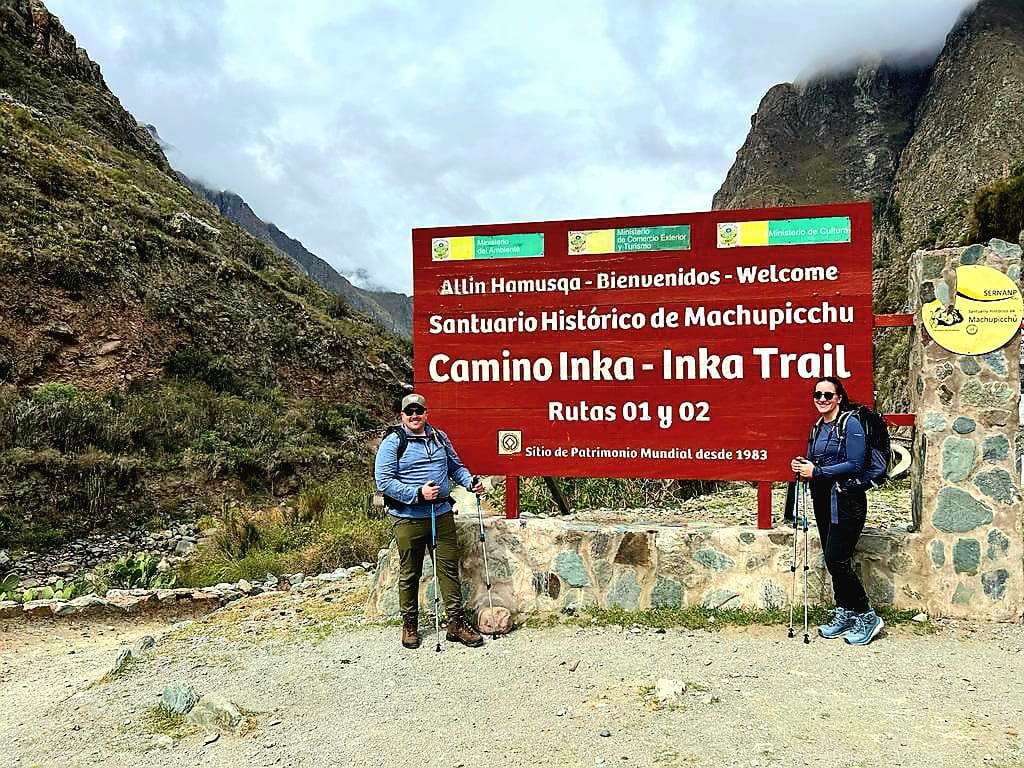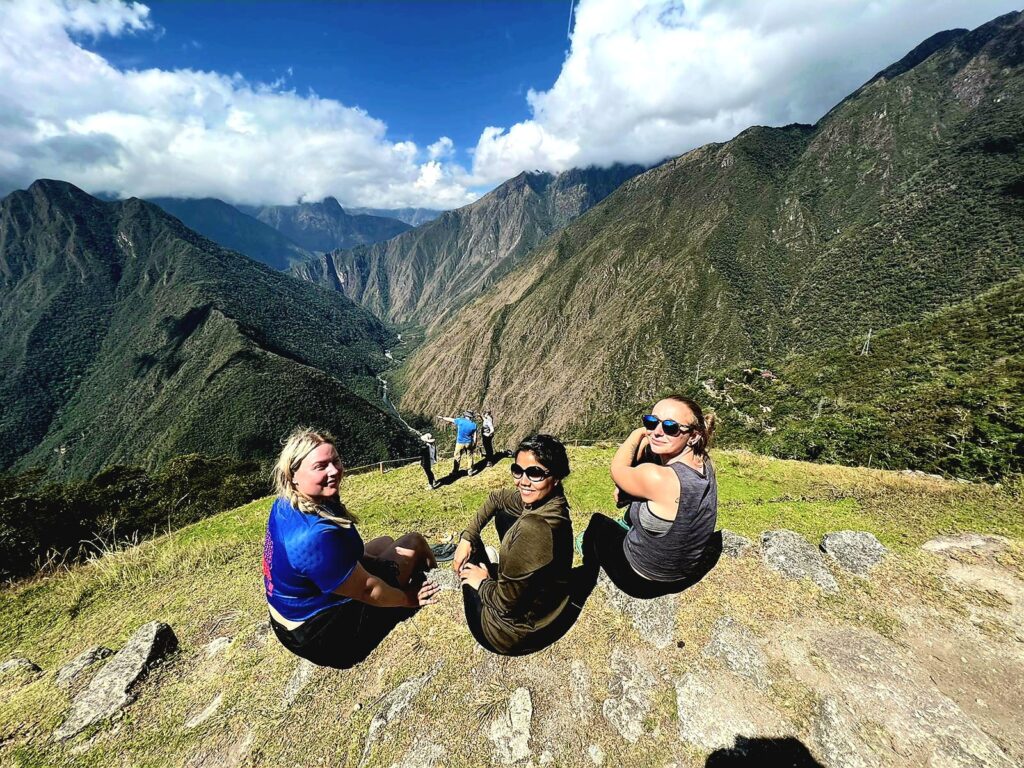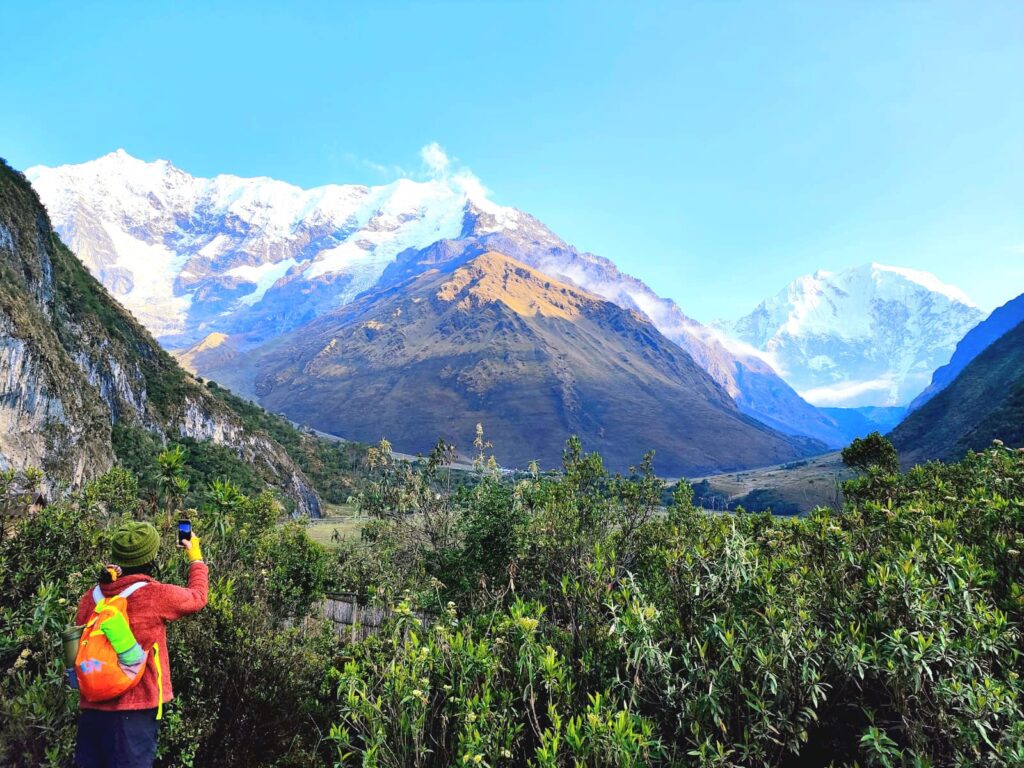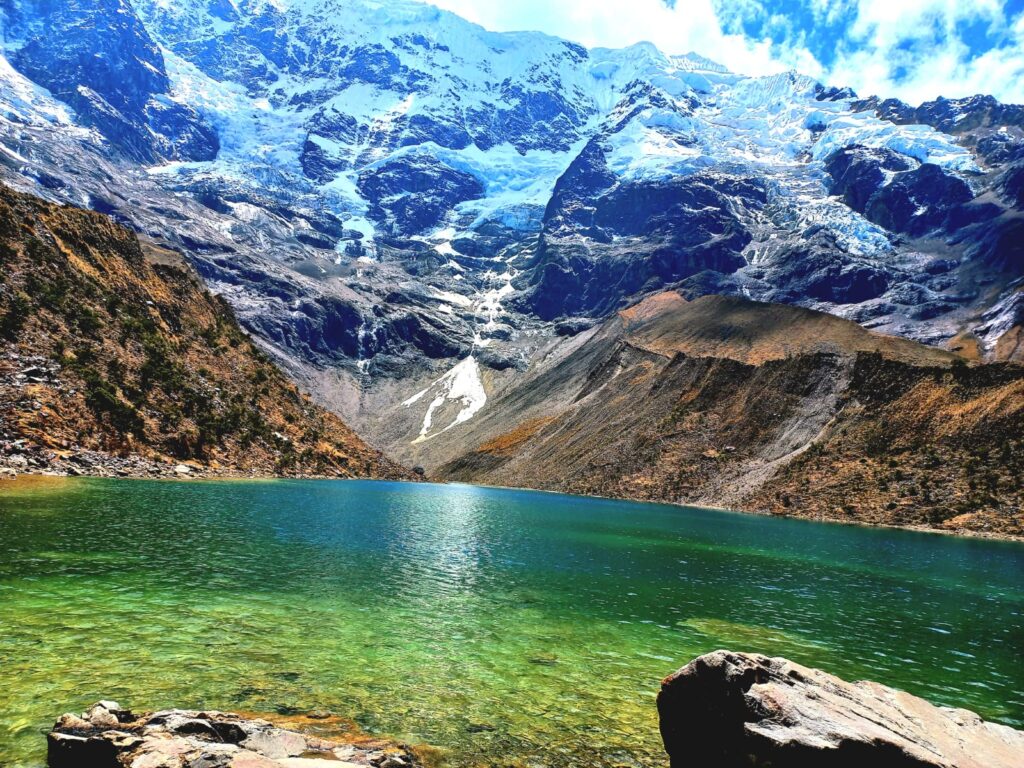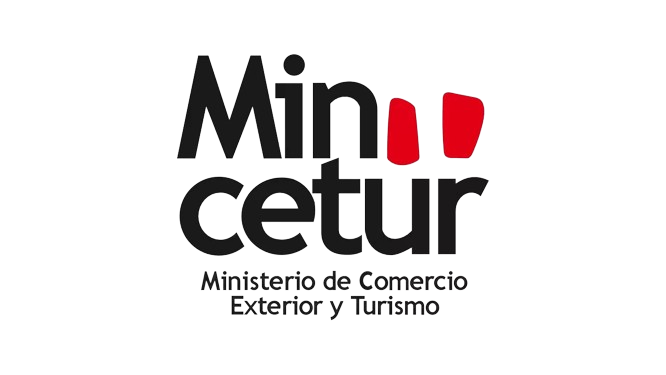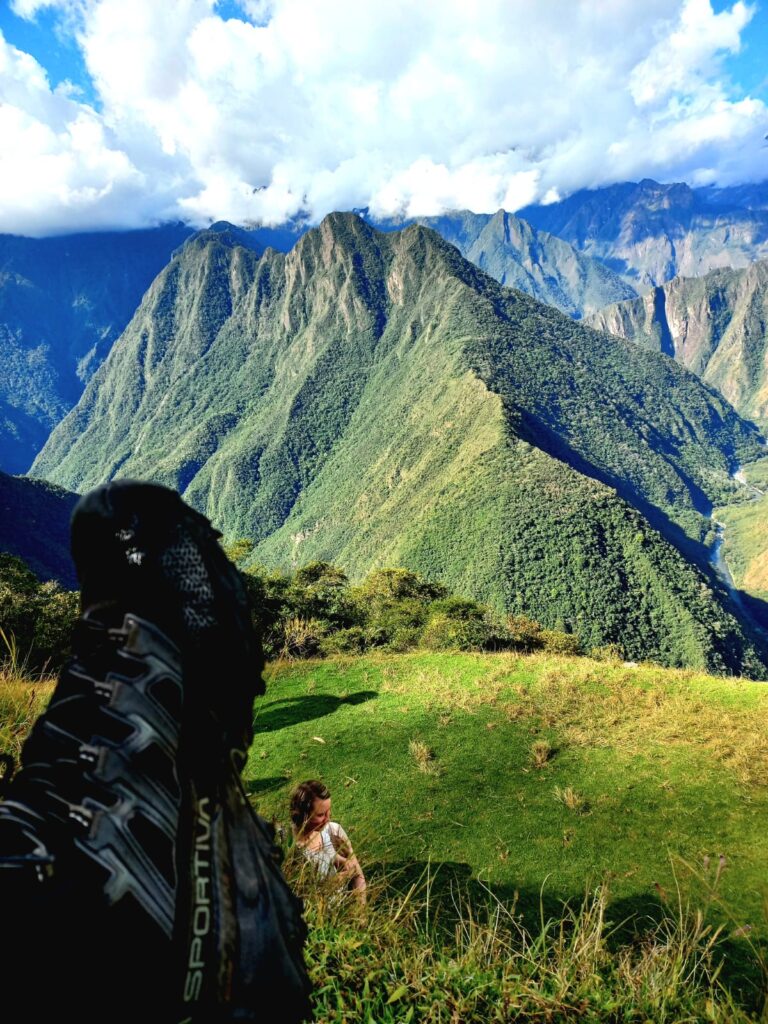
The importance of hiking shoes:
A good pair of hiking shoes can be the difference between a great hike or a terrible one for a number of reasons, especially when navigating through difficult terrain such as the Inca Trail to Machu Picchu.
Protection:
Hiking in rugged environments requires footwear that protects feet from sharp objects and uneven terrain. Good hiking shoes have reinforced soles and a sturdy construction to protect feet from injury.
Support:
The uneven and often rugged terrain of hiking trails can put a lot of strain on feet and ankles. Quality hiking shoes provide the support needed to prevent twists, sprains or ankle injuries. They are designed to offer stability and support, which is essential for long distance hikes such as the Inka Trail, ensuring you can safely navigate across diverse terrain without compromising agility.
Comfort:
Comfort is key during long treks, where you may be walking for several hours or even days, as in the case of the Inca Trail. Good hiking shoes are designed with comfort in mind, offering adequate cushioning, breathability and fit to reduce the risk of blisters and discomfort. This is essential for a positive hiking experience, allowing you to focus on the beauty of your surroundings rather than the discomfort of your feet.

Choose the perfect hiking boots for your trip.
Are you planning your trip and don’t know where to start? A good pair of hiking boots can be a good place to start.
This article will help you choose the right footwear for your hike taking into account size, fit, material, utility, terrain and difficulty of the hike.
Types of hiking shoes:
There is a wide variety of hiking boots, but they are divided into three types: low-cut, mid-cut and high-cut.
Low-cut boots: Cover just below the ankle and look like normal running shoes, ideal for light hiking and easy terrain, they offer no ankle support.
Mid-cut boots: Slightly larger than low-cut boots, they cover slightly above the ankle. Incredibly versatile and useful for longer hikes, they offer ankle support and prevent stones from entering the boots.
High-top boots: These boots cover the ankle, and some are even higher, reaching up to the calf. Ideal for strenuous hikes where you carry a heavy backpack, their weight may help you keep your balance, and they are excellent for uneven terrain.
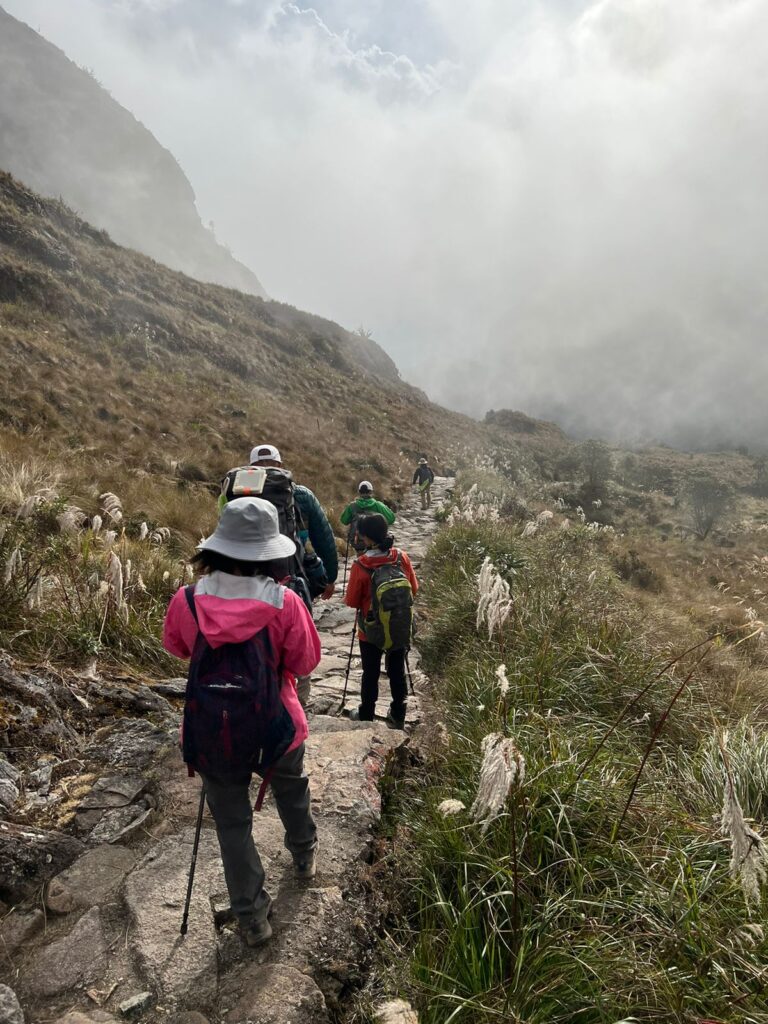
Advantages of using trekking poles
Have you ever wondered about the usefulness of trekking poles? If you are passionate about nature and hiking routes, you have surely asked yourself this question. But did you know that these poles can become your best ally during your excursions?
Support points:
Offer more footholds: Trekking poles offer two additional footholds, which is essential for multi-day hikes and extreme terrain.
By using them, you engage your upper body and work 90% of your muscles, compared to the 60% used in normal walking.
Pace:
Improve your pace: By using trekking poles, you will be able to pace yourself and increase your speed.
In addition, you can increase your calorie consumption by up to 45%, making them a guaranteed way to stay fit.
Traction and balance:
Improved traction and balance: Trekking poles are especially useful for terrain with snow, water, mud and loose rock, as they provide increased traction and balance.
This increases your agility and therefore your pace and speed.
Load distribution:
Reduce the load on knees and ankles: Trekking poles have been shown to greatly relieve the lower extremities, preventing knee and ankle injuries by engaging the upper trunk.
They reduce the impact on the knees by up to 25% and allow you to enjoy the activity for longer.
Posture
Help control body posture: Long poles are ideal for straightening the back and improving posture and spinal stability.

Why it is essential to carry a water bottle on the Inca Trail.
Carrying a canteen or water bottle on the Inca Trail is absolutely essential for several reasons ranging from health and personal safety to respect for the natural environment in the conservation of the Machu Picchu Historic Sanctuary. Below we explain some important aspects:
Preventing dehydration
The Inca Trail is known for its varied microclimates and the physical demands of the trek, which can vary considerably depending on the geographical characteristics of each day. Dehydration at high altitude can occur more quickly than at sea level due to low atmospheric pressure and dry air. Drinking water regularly helps prevent dehydration, altitude sickness and other altitude-related exertion problems.
Maintaining physical performance
Walking over uneven terrain and climbing steep stairs, such as those on the Inca Trail, requires a lot of energy. Adequate water intake is essential for maintaining blood volume, facilitating the transport of nutrients and oxygen to the muscles and for the elimination of metabolic waste. This is vital to maintain a high level of performance and enjoy the trek.
Body temperature regulation
Intense physical exercise, combined with the climatic variations along the Inca Trail, can affect the body’s ability to regulate its temperature. Water helps to cool the body through perspiration and the body’s ability to regulate its temperature.
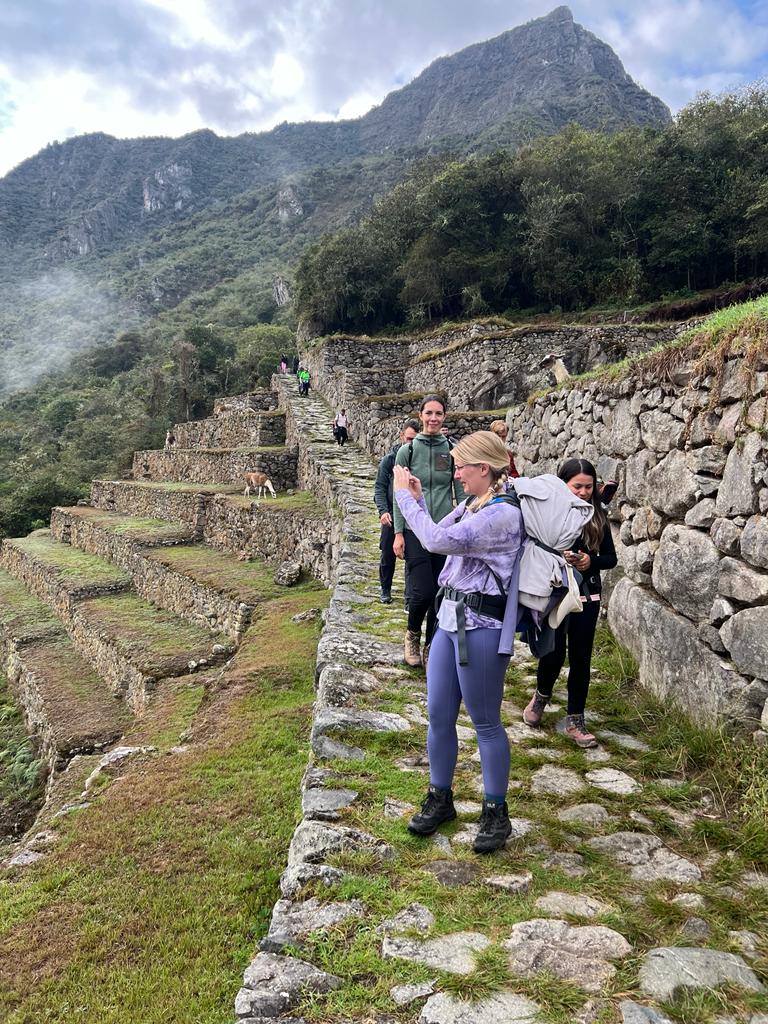
Top 5 tips before trekking the Inca Trail
So you have already decided to fulfil one of your dreams: to hike the mythical Inca Trail to the citadel of Machu Picchu. So here are the top 5 tips before hiking the Inca Trail
We want to be part of your plans by giving you 5 tips before undertaking the Inca Trail, bearing in mind that it should be a vital experience where you will never forget all the good things you will experience. That’s why we will give you these simple and practical tips so that nothing can spoil it.
- Book 4 to 3 months in advance:
As soon as you make your decision, don’t forget to book your flights, accommodation and route. This route attracts thousands of people from all over the world, so it tends to be in high demand for most of the year. - Acclimatisation:
For several days, you will be thousands of metres above sea level. This means that your body needs to acclimatise slowly to avoid altitude sickness.It is advisable to stay in the city of Cusco for at least 2 days before starting the trek to acclimatise well. You should know that the date of the Inca Trail cannot be changed and there is no refund in case of absence, so it is essential to take precautions not to miss the opportunity to do it. - Appropriate clothing and footwear:
The climate in the Andean region tends to change suddenly. Even if the sun appears, once it hides behind a cloud, the temperature drops rapidly.
For this reason, it is important to wear a coat/jacket at night, as the cold can be damaging.
Special trekking shoes are essential for the trail. Pay attention, cover your ankles to give you more stability. This is important as the shoes must withstand 8 hours of walking a day and the terrain is often difficult and slippery.
- Hiking poles:
A pair of walking poles will help you a lot during the whole trip. If you are new to them, you will soon learn how to use them. They will help you move more safely and comfortably by lightening some of the weight and giving you extra stability. You can also buy them in Ollantaytambo. - Essential accessories:
It is not recommended to drink water from the springs along the Inca Trail. Carry your own canteen or mineral water bottle.
Be sure to bring insect repellent, a torch, sunscreen and batteries for your personal devices.

Weather in Inca Trail
The weather on the Inca Trail varies considerably, with two distinct seasons: the rainy season, from November to March, and the dry season, from April to October.
However, in recent years, the weather has changed substantially and the seasons are not as well defined as they used to be, so it rains most of the time during the dry season.
In the rainy season, temperatures can fluctuate between 5ºC and 30ºC during the day; while in the dry season, temperatures range between -5ºC and 35ºC throughout the day.
In June, July and August, temperatures can drop below freezing due to winter frosts.
The lowest temperatures will be experienced at night, both in the city and during excursions.
Throughout the day, the cold will not be an inconvenience, as you will always be on the move and therefore will not feel it much. However, temperatures will drop at night.
Weather in Inca Trail Cusco:
The first night in AYAPATA, the weather will be mild and the temperature will not drop below 8ºC, as the campsite is located in an inter-Andean valley with a temperate climate.
During your second night in CHAQUICOCHA, the temperature may drop below -5ºC. This will be the coldest night of the entire trek and, therefore, the reason why you need to bring a good sleeping bag.
On your third night in Wiñaywayna, the weather will be mild and humid and can reach up to 15ºC.
If your campsite is at Phuyupatamarca, temperatures may drop below 5ºC, as you will be located at a high altitude point. However, the sunset and sunrise views here are spectacular.


